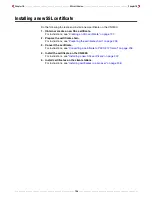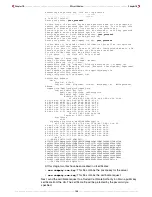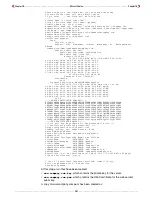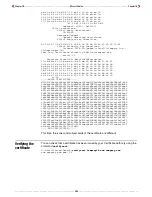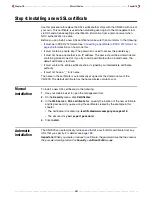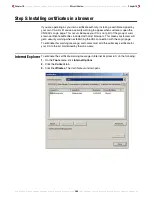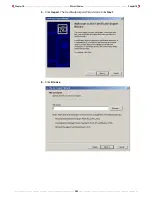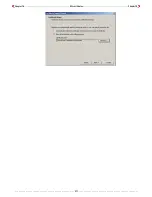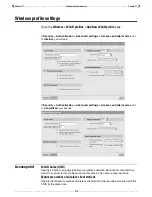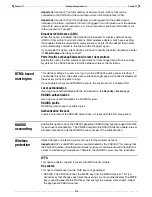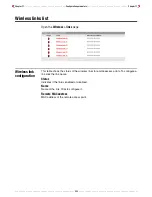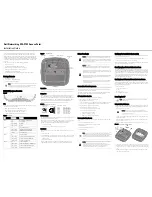
Chapter 10 - - - - - - - - - - - - - - - - - - - - - - - - - - - - - - - - - - - - - - - SSL certificates - - - - - - - - - - - - - - - - - - - - - - - - - - - - - - - - - - - - - - Chapter 10
- - - - - - - - - - - - - - - - - - - - - - - - - - - - - - - - - - - - - - - - - - - - - - - - - - - 208 - - - - - - - - - - - - - - - - - - - - - - - - - - - - - - - - - - - - - - - - - - - - - - - - - - -
Step 5: Installing certificates in a browser
If you are operating as your own certificate authority, installing a certificate signed by
your own CA will still cause a security warning to appear when customers open the
CN3000’s Login page. This occurs because your CA is not part of the group of well-
known certificate authorities included with most browsers. This means customers will
get a security warning when establishing the SSL connection with the Login page.
To eliminate this warning message, customers must add the public key certificate for
your CA to the list maintained by their browsers.
Internet Explorer
To eliminate the certificate warning message in Internet Explorer 6.0, do the following:
1.
On the
Tools
menu, click
Internet Options
.
2.
Click the
Content
tab.
3.
Click
Certificates
. The
Certificates
window opens.
Summary of Contents for CN3000
Page 1: ...CN3000 Administrator s Guide...
Page 8: ...Table of Contents 8...
Page 60: ...Chapter 2 How it works Chapter 2 60...
Page 94: ...Chapter 4 Scenarios Chapter 4 94...
Page 106: ...Chapter 5 Activating the public access interface Chapter 5 106...
Page 211: ...Chapter 10 SSL certificates Chapter 10 211...
Page 292: ...Chapter 13 The configuration file Chapter 13 292...
Page 370: ...Chapter 16 Sample setup Microsoft RADIUS Chapter 16 370...
Page 396: ...Chapter 16 Sample setup Microsoft RADIUS Chapter 16 396...
Page 414: ...Chapter 17 Experimenting with NOC authentication Chapter 17 414...



